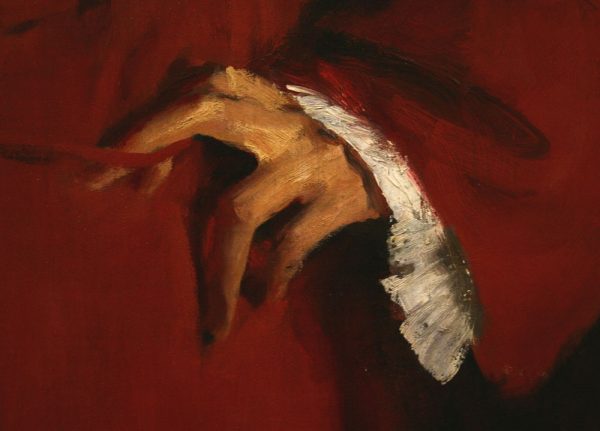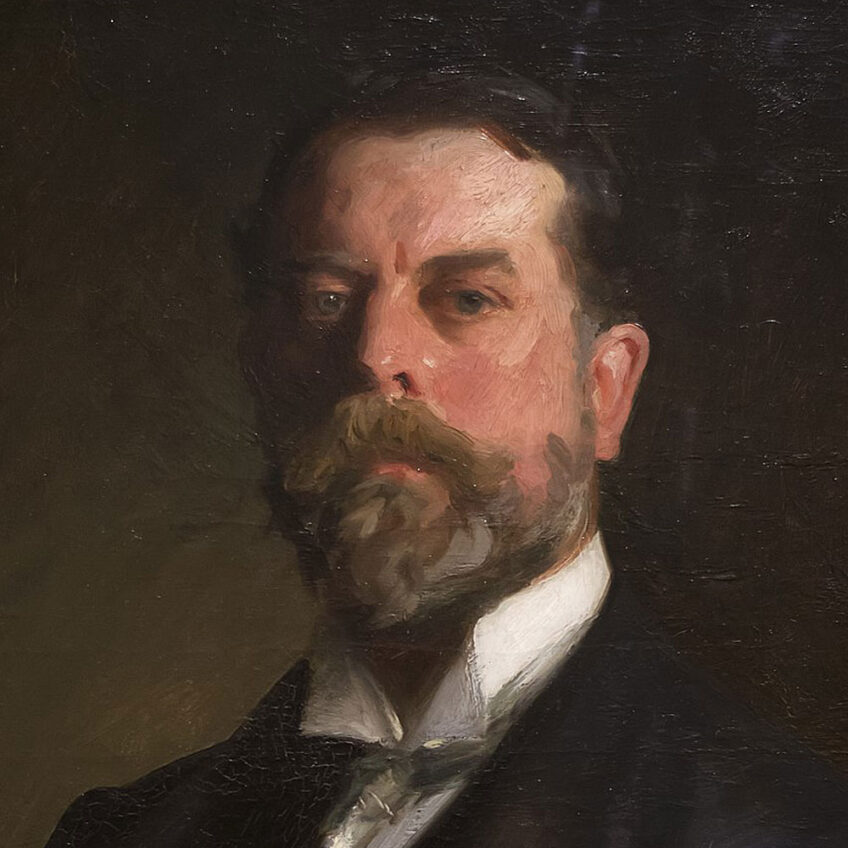During a recent plein air painting event I was driving for the first time to the home of my host family. I would be staying there for the week. It was after dark and I had mapped the address on my phone. As I glanced at the map quickly before I set out, the route looked simple enough. A long straightaway with a few turns near the destination.
As I traveled along the straightaway, the voice soon instructed me to take a right turn, which I did. I found myself on a dirt road. I didn’t think much of it at first since I knew the house was in a rural area. A left turn came next, leading me onto a smaller dirt road. There were very few lights around as I bumped along, squinting out the windshield trying to see where I was headed. Suddenly, the road ended at a small irrigation ditch. The voice told me to turn left, but that only led me back in the direction from which I’d come. I needed to be on the road I could vaguely see on the other side of the ditch. But I couldn’t get across. I began to realize that my mapping app didn’t actually know how to get me to my destination.
I backtracked to the main road and followed it to the next turn (onto a paved road), then easily found the house. The directions should have led me along the much more direct route — the better way to reach my destination.
Sometimes there is a simpler way and we have to pay attention to find it.
Making things too complicated is a regular pitfall for us in many areas of life. In painting we call it overworking. It usually happens when the artist endlessly dabs in a given section of a painting, waiting for just the right shape or effect to suddenly appear from the ongoing jumble of brushstrokes.
Sound familiar?
As you may have discovered, scraping what you’ve painted and starting again is sometimes necessary to get back to a stronger, simpler shape.
John Singer Sargent was reported to regularly scrape and repaint various sections of his portraits. Rather than dabbing at them to try to get them right, he would scrape and repaint them to achieve the simplest finish. When we view his paintings today, the sheer simplicity of the brushwork is almost unparalleled. There was wisdom in his method. Take a look at the above image: “Self Portrait” (detail), by John Singer Sargent, painted in 1907.

So how do we follow Sargent’s lead and avoid overworking our paintings? A few ideas:
- Limit your painting time. I’ve found that sometimes my more rapidly done paintings retain a simplicity and strength that becomes lost when I spend more time on a piece. For example, limiting myself to an hour for small plein air works often produces better results. Some artists actually set a timer.
- Lengthen your planning time. Try to avoid jumping in and starting your painting without much thought.
- Simplify. See objects in your subject as simple shapes.
- Visualize. Picture the brushstrokes you want to use to fill in each area of your chosen scene.
- Include only the essentials. Leave out unnecessary details that require extra painting time, but don’t add anything to your painting.
- Like Sargent, don’t be afraid to scrape. If you realize that you’re breaking down your shapes too much with unnecessary dabs/details, scrape or wipe the area and repaint it.
Keep in mind that too much of something can become just that — too much. With that said, I’d better sign off before I overwork this post….
Leave a comment below if you have other ideas to help us avoid overworking.

28 Responses
Hedy Buzan
As an abstract artist I often will put a piece up in the studio and “ignore” it. Of course it is there all the time and I find when I go back to edit it, I can look at it not only with “fresh eyes” but with a clear sense of what it needs, as I have grown familiar with it.
Jonathan Short
Thank you ! Sometimes you have to hear it from someone else but you have thought it yourself already.
I joined Instagram 3 days ago & I have said to a couple of artists I need to loosen up.
Well……. thx 🥂
Ed
Thanks Dan,
As I look at some of my work I can now see just where I have overworked something! Your advice always seems to strike home!
Ed Draney
Mark Day
Good thoughts Dan…and John!…….limiting color choices, or balancing Volumes of color masses helps me at times.
William M. McCoy
John Howard Sanden, portrait artist and author, followed Sargent’s idea to use the biggest brush possible for the job at hand. He said, “if it feels too big, it’s just about right.” The larger brush prevents one from “dabbling” too much, which naturally occurs when using a small brush.
Colleen Veneri
Excellent advice
Dan Schultz
Some good ideas, Hedy, Mark and William. Thanks for commenting!
Rashaun
Thanks for the post Dan. As usual, I’m currently overworking a painting. So hopefully this list will help me.
Sherri Trout
Thank you Dan sometimes I need to remember the basics as I get too detailed and its too much. Simple is better.
Diane
I’m doing that right now! Thank you so much for this reminder. I’m going to stop and scrape.
John P. Weiss
Great reminders. When I paint loosely, the results are often fresher, more authentic than my more labored pieces.
Patti
Wonderful post. Thanks Dan for the examples, lessons, and tips.
Mandy Adendorff
Excellent article and much needed reminder! Thank you!
Rhett
Thanks, Dan, for helping me open my eyes and truly see. Your instructions are always so helpful. And the fact that you’re an excellent writer makes reading your directives a true pleasure. Be well, friend.
Dan Schultz
Hope you’re well too, Rhett!
Gayle Martin
Thank you, Dan, for that useful information. I will keep those points in mind next time I get out to paint.
Hope all of you are safe and doing well.
Nancye Culbreath
I find that I will paint loose and use large shapes when starting out a painting in the studio. The more I have committed myself to the painting I’ll begin to have doubts and detail, thus losing that spontaneous more assured painting style that I started with. I like the idea of scrape it off and look at it with fresh eyes
ROBERT D IMPELLIZZERI
Great advice Dan, thanks!
Ken Auster once told me to make executive decisions about the design and composition up front (in a sketch) so that I am free to allow emotion to take over while painting. In the end this speeds up the process and allows for a fresher result.
Dan Schultz
A good tip, Rob. Thanks! Hope you and Libby are staying well.
JOANNE LAVENDER
Thanks Dan, great suggestions!
Michael R Baum
Your suggestions are on the mark. I have had a tendency to overwork large paintings. My solution has been to do a small study first to work out the design of the painting. This gives me a good idea of what the large painting should look like when it’s finished. and it gives me the road map to get there. Of course, there are always changes an adjustments along the way, but it saves a lot of fuss and produces a more “spontaneous” effect.
Dan Schultz
Great tip, Mike — thanks for adding to the discussion! Hope you and Patrice are doing well.
Rhea
Finally got around to reading this article. I left the studio 2 days ago fed up because I had overworked the water with reflections in my current landscape. I’ll go back and start fresh. Simplify. Thanks for the info and encouragement.
Rhea
Chris
I find I get a much fresher painting if done plenair rather than from photo. I certainly concentrate on bigger shapes plenair, which photos I find ai stress the details to much. I’d like to 100% abandon working from photos though they are convenient at times. You work is breathtaking and you advice is hugely appreciated. It’s nice to hear you have had challenges along the way and were not born painting as you do now.
Dan Schultz
Try giving yourself a time limit when working from a photo. That can help you treat it the same way you would treat a plein air piece. Try an hour and a half or two hours.
Rand Pawson
I find there is a delicate moment when the piece is at the fullest it is going to go, which may be not great, but you second wind it with a take on the original, and then see that the two are not compatible. If you can bring them back together it will be great, maybe the best. So you wager the overwork on the possible powerful outcome to run the chance of destroying the physical properties the materials break down.
Alan Swanson
I paint with gouache on cold press paper. My biggest problem is mixing paint to get the “correct” color. I find myself working and reworking an area to the point that the paper itself is affected. I admittedly am too much of a perfectionist. Furthermore, it may be that I simply need to practice more on scrap paper. Or maybe I should check out other supports such as hot press paper, illustration board, or Ampersand board. Anyway, just a few comments. Perhaps other artists have had similar experiences.
Dan Schultz
I have the same issue with gouache since the colors will often dry darker than they are when they’re wet. I think it just takes repetition to learn to control that better. Trying different supports is a good idea. You might also try setting a timer so that you’re forced to stop after a certain amount of time. I will sometimes limit myself to 1 hour, which requires more efficiency and doesn’t allow enough time for too much reworking.